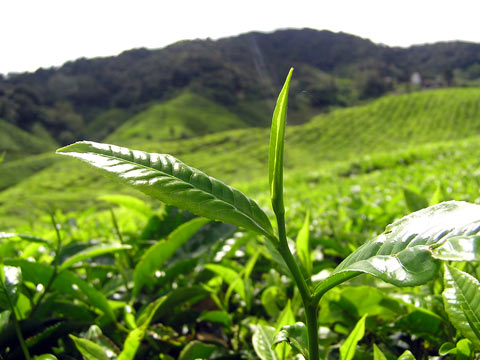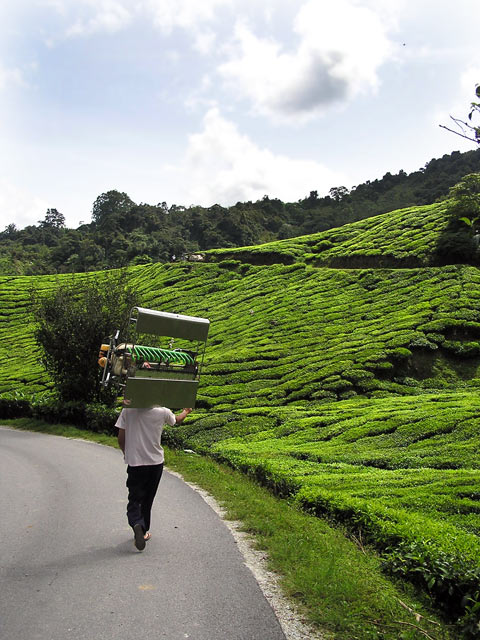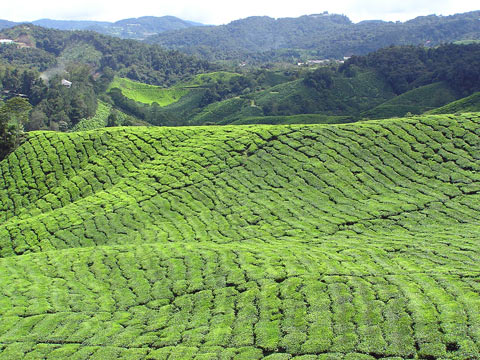I know very little about tea, apart from what you learn by osmosis from your Anglo-Australian grandparents. I can make a decent cup of black tea but tend to regard it as a sort of beverage bycatch; something that fits well alongside pho or yum cha or fruitcake. I have no idea how it is grown, processed or traded in large quantities. I was in Tanah Rata in Malaysia’s Cameron Highlands and this emboldened me to find out.
The general image of smiling, passive locals hand-picking tea that is planted by unscrupulous tea advertisers the world over is as wrong as it is Orientalist. Most of the tea in the Cameron Highlands is semi-mechanically harvested. Two people standing each side of the row of tea drag the above device across the new shoots, which slices and blows the fresh tea into a bag. Less accessible bushes on the mountain peaks and the depths of the ravines are still harvested by hand, but this represents an absolute minority of the total tea produced. In lowland plantations, a modified combine harvester drives over the top of the rows. The tea is allowed to resprout fresh tips that are then reharvested about every three weeks.
Once picked, the leaves are withered, crushed, torn and curled by machine then set aside to oxidise. The oxidation process is called “fermentation” for purely historical reasons as nothing ferments. The tea, now turned from green to black from oxidation, is dried, sorted, tasted and packed.



